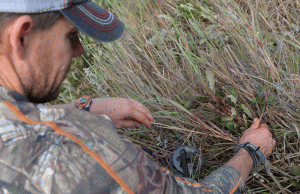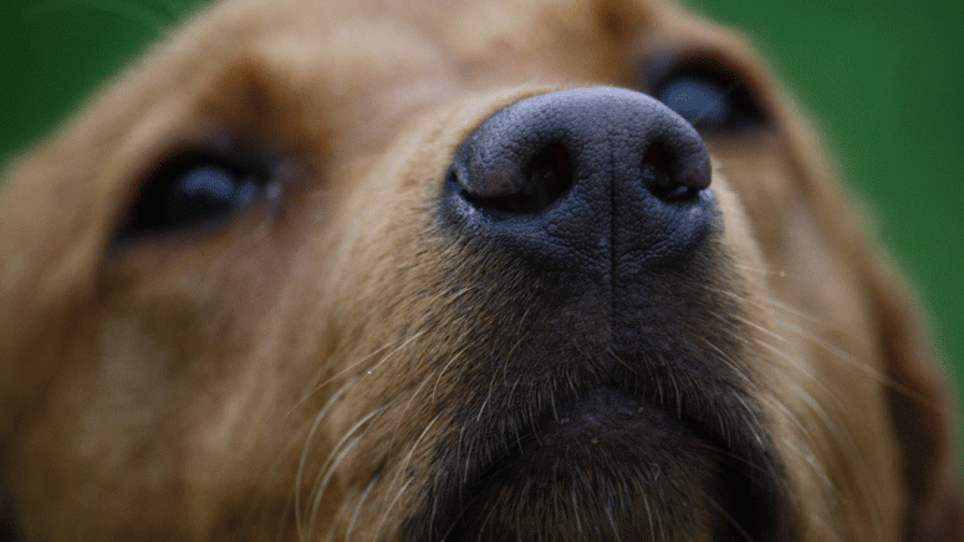Mention dogs in the deer woods, and most people will immediately think of a mutt chasing all of their deer out of the county. There are, of course, bad dogs in the deer woods, but there are also good game-recovery dogs out there, too. More than half of states allow for trailing wounded game with dogs in some form, which is a good step. Hopefully, there will be a much more wider-spread acceptance of game-recovery dogs in the near future because they make humans look woefully inadequate when it comes to finding dead critters.
This skill, which is natural to many breeds, is the topic of most of the information out there. If you ever get to see a good dog work the trail of a mortally wounded deer, you’ll know what I mean. It’s impossible to not be impressed.
Naturally, the most compelling reason to train a dog to recover game is because they are so adept at it. There are other reasons as well, some of which most bowhunters have probably never considered.
Time Isn’t On Your Side
Archery seasons across the country open up anywhere from August to October. During that time frame, it’s almost a guarantee that there will be some hotter-than-average temperatures. We’ve all shot deer on those days, and as soon as our arrow is on its way, our thoughts turn to the amount of time we’ll have to recover our animal, get it pieced out and cool off the meat.
Provided you make a good shot, it’s usually not much of an issue. Unfortunately, we don’t always deflate both lungs or pinwheel the heart. Liver and paunch hits happen, and, when they do, it’s always a personal battle to decide exactly how long to wait before taking up the trail.
When these do happen, especially on a gut-shot deer, the spoor is usually weak and the progress slow. A dog, on the other hand, can follow a gut-shot trail just as quickly as it will follow a double-lung trail. The efficiency of their work is incredible, and while you may have to wait five or six hours to head out after your deer, you won’t tack on another three or four while methodically trailing. A dog will take you to your deer usually within 10 or 15 minutes. That means you’re far less likely to lose the meat to spoilage or coyotes. To most bowhunters, that’s a big deal.
It’s important to note that it’s not just the bad shots that deserve a dog’s help. Sometimes we make great shots that still don’t result in much sign. High entrance and exit wounds, for example, will often leave little blood to follow. Low wounds can plug with fat or intestines, which also results in a tough trail. None of that matters to a dog, because they aren’t dependent on blood to trail. They follow the scent of the wounded animal that it leaves whether it’s bleeding out profusely or hardly at all.
Get Back In the Stand
Ask any tracker when they are most busy, and they’ll probably say something about the rut. When there are more bowhunters in the woods and more bucks cruising, there will be more deer shot that need to be recovered. This is where a dog can be useful. A game-recovery dog can make not only the recovery process much easier, but the hunting much better.
Their efficiency alone allows for quick recovery times, which allows us to get back in the stand. If you’ve got multiple tags and a limited amount of vacation time to burn on treestand sits, this is a huge asset.

You might spend hours unraveling a weak blood trail, polluting the woods with your human footprint and inadvertently affecting other bowhunters in the area. A good blood-trailing dog can lead you to your downed buck in a matter of minutes.
There’s more to it than that, however. Since dogs are so good at trailing, they pretty much eliminate the need for grid searching or setting out in concentric circles to pick up the next speck of blood in a sea of fallen leaves. They go from point A to point B about as good as anything can, which lessens the impact your recovery will have on the woods as a whole. This not only benefits you, but also any of the other bowhunters on your property. No one wants a whole herd of human trackers covering every inch of the woods they hunt on the off chance they’ll spot a dead deer. If you share the woods, or if you plan to bring someone hunting with you in the near future, everyone will definitely appreciate you taking the right steps to minimize overall human impact on the deer grounds. This is also important if you have a deer sanctuary on your property where you don’t like to set foot, or if you’re hunting on small properties.
Plenty of bowhunters spend their fall on parcels that are 30 acres or smaller (some even considerably smaller). This means that deer shot on their ground might easily cross property lines before expiring. Knowing exactly where your deer went will help in neighbor relations because you won’t have to call every adjoining landowner for permission. You’ll know where the deer went, whose land it’s on and how to get the OK to cross the line and continue with the recovery.
A Dog Of Your Own
As the usage of recovery dogs becomes more widespread, the interest for training a personal tracking dog grows. This is due to a couple of reasons, the first being that a lot of people believe they need to pick up a dedicated tracking dog. However, that’s not the case. Any sporting dog can be trained to trail wounded game. Hunters who currently own a bird dog can easily train it for game recovery without worrying that the new skill will take anything away from its ability to hunt upland birds or waterfowl. It’s no different than training a hard-core bird dog to find shed antlers — this only adds to their value without taking anything away from them.
Training a dog doesn’t take a ton of expensive equipment, so there is little to no barrier financially to get started. You really only need a few pieces of deer hide and access to a deer liver (you can also pick up a beef liver at your local butcher shop). For most dogs, the ability to trail naturally is already in them, so coaxing that out with the proper recovery training is pretty simple. It’s actually a lot easier to do than training them to obey us, which is something that doesn’t come naturally to them.
This is especially true if your dog has any retrieving desire (the more the better, of course). A dog that is driven to run out and bring something back to you will recognize tracking as nothing more than a new way to run a long retrieve, although they obviously won’t be able to bring a downed deer back to you. The concept, however, is the same.
We know without question that game-recovery dogs are a better option than we are for tracking mortally hit game, but the reasons extend far beyond their skills in following a trail. They can help us when it comes to avoiding meat spoilage, over-pressuring our deer ground, maintaining neighbor relations and getting right back in the stand to enjoy our fall time away from work.
And, let’s be honest, doesn’t that appeal to all bowhunters?
The Others
We have a somewhat myopic view of game-recovery dogs that is centered on whitetails. This is because the whitetail deer is by far the most popular species of game out there. However, that doesn’t mean that a good dog can’t recover other animals. Dogs have been used to locate elk, wild boar, turkeys and other critters. I’ve even used my dogs to find wounded rabbits. They can find bears, too, which might be the easiest animal to lose with a poor shot. A bear’s anatomy gives it a penchant for retreating into the thickest cover around, and their long fur make bears difficult to recover unless they’re hit well. This is where a dog that uses its nose instead of its eyes like we do changes the game and vastly increases the odds of recovering gut-hit bruins.
Outfitter Advantage
I work with Bluff Bucks Outfitters each fall and get to see what whitetail outfitters have to work with each and every week. When you’ve got multiple hunters in good stands, there are bound to be arrows flying. On a good night, three or four hunters might shoot bucks. With my dogs, the recovery time for those deer is much quicker than if we had to blood trail with flashlights. We also have the added benefit of being able to read the dog’s body language. As anyone who has been in a deer camp knows, sometimes a hunter thinks he made a good shot when he didn’t. A deer that isn’t going to die leaves a different scent trail than one that is mortally wounded. A good dog will let me know that through disinterest within a few minutes.
Any outfitter with the option to use game-recovery dogs would be wise to do so. As a potential client, you’d be equally wise to look into outfitters that make it a point to either have their own dogs or utilize tracking services. If they do, you know they are committed to quickly recovering every mortally wounded deer.






